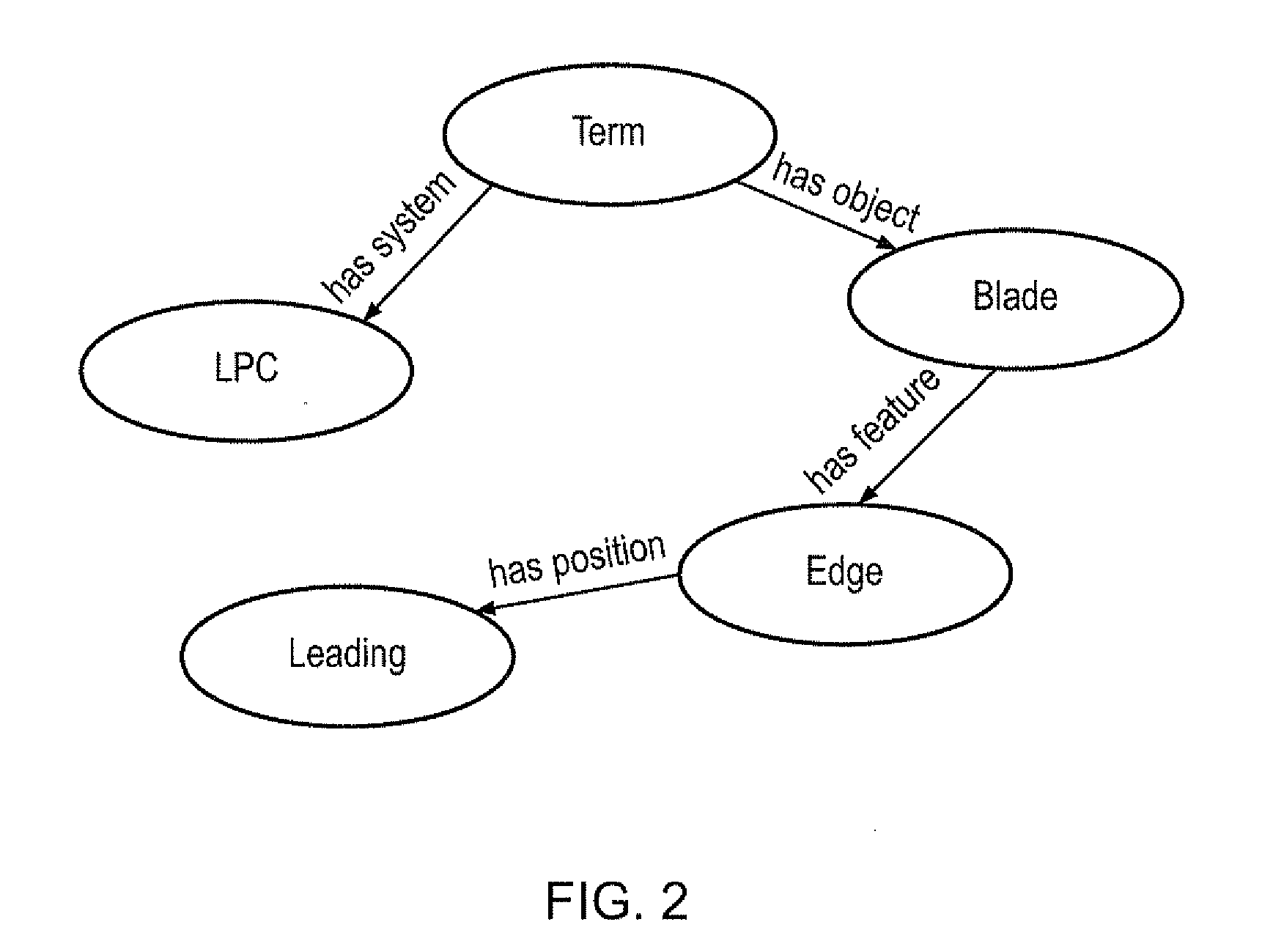Entity recognition
a technology of entity recognition and entity, applied in the field of entity recognition, can solve the problems of requiring input from both domain experts and linguists, and requiring linguistic rules that differ slightly from established rules, so as to reduce acquisition overhead, save time and cost, and effectively query
- Summary
- Abstract
- Description
- Claims
- Application Information
AI Technical Summary
Benefits of technology
Problems solved by technology
Method used
Image
Examples
Embodiment Construction
[0041]The Terminology Recognition scheme uses a set of lexicons (a separate lexicon for each semantic type involved within a domain—e.g. a lexicon of positional terms, a lexicon of agents, a lexicon of features, a lexicon of mechanisms, etc.) which contain all domain-specific concepts, lists of their distinct synonyms, and the concept's “part-of-term”, a property similar to a part of speech in that, while part-of-speech denotes whether a word can be a noun, verb, etc., “part-of-term” denotes whether the term is a system / object / type etc. The system compares text to the distinct synonyms using a series of matchers involving string similarity metrics. The matchers are operated in such a way that an exact match to these distinct synonyms is not required—and in practice hardly ever occurs—as minor spelling differences and affixes are considered using string-distance metrics and stemming algorithms.
[0042]Once terms have been tagged (annotated) with sub-concepts, a grammar is employed to g...
PUM
 Login to View More
Login to View More Abstract
Description
Claims
Application Information
 Login to View More
Login to View More - R&D
- Intellectual Property
- Life Sciences
- Materials
- Tech Scout
- Unparalleled Data Quality
- Higher Quality Content
- 60% Fewer Hallucinations
Browse by: Latest US Patents, China's latest patents, Technical Efficacy Thesaurus, Application Domain, Technology Topic, Popular Technical Reports.
© 2025 PatSnap. All rights reserved.Legal|Privacy policy|Modern Slavery Act Transparency Statement|Sitemap|About US| Contact US: help@patsnap.com



